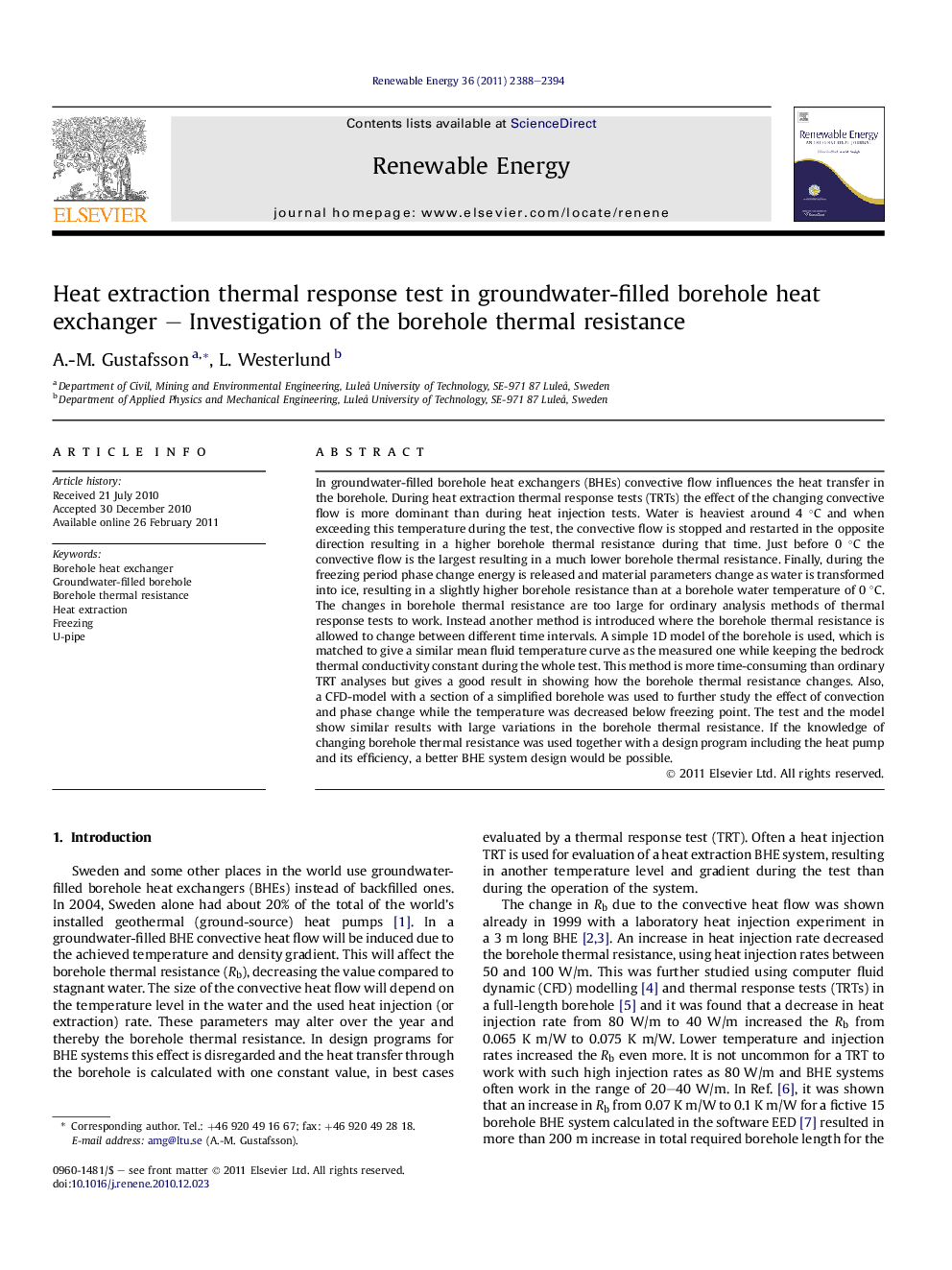| کد مقاله | کد نشریه | سال انتشار | مقاله انگلیسی | نسخه تمام متن |
|---|---|---|---|---|
| 301577 | 512510 | 2011 | 7 صفحه PDF | دانلود رایگان |

In groundwater-filled borehole heat exchangers (BHEs) convective flow influences the heat transfer in the borehole. During heat extraction thermal response tests (TRTs) the effect of the changing convective flow is more dominant than during heat injection tests. Water is heaviest around 4 °C and when exceeding this temperature during the test, the convective flow is stopped and restarted in the opposite direction resulting in a higher borehole thermal resistance during that time. Just before 0 °C the convective flow is the largest resulting in a much lower borehole thermal resistance. Finally, during the freezing period phase change energy is released and material parameters change as water is transformed into ice, resulting in a slightly higher borehole resistance than at a borehole water temperature of 0 °C. The changes in borehole thermal resistance are too large for ordinary analysis methods of thermal response tests to work. Instead another method is introduced where the borehole thermal resistance is allowed to change between different time intervals. A simple 1D model of the borehole is used, which is matched to give a similar mean fluid temperature curve as the measured one while keeping the bedrock thermal conductivity constant during the whole test. This method is more time-consuming than ordinary TRT analyses but gives a good result in showing how the borehole thermal resistance changes. Also, a CFD-model with a section of a simplified borehole was used to further study the effect of convection and phase change while the temperature was decreased below freezing point. The test and the model show similar results with large variations in the borehole thermal resistance. If the knowledge of changing borehole thermal resistance was used together with a design program including the heat pump and its efficiency, a better BHE system design would be possible.
Journal: Renewable Energy - Volume 36, Issue 9, September 2011, Pages 2388–2394